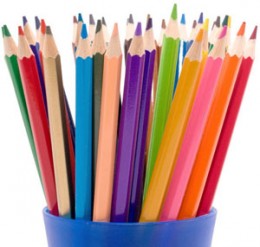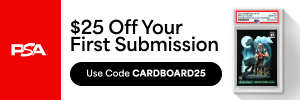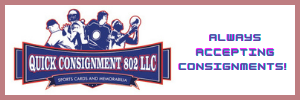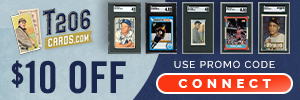
How to Set Up a Sports Card Trading Blog
Chances are, you have piles, if not boxes, filled with cards you'd like to trade. For most, the days of in-person trading are gone. Unless you have a excellent hobby shop nearby that has trade night or regularly scheduled shows, finding people to trade with can be tough. Thankfully, the Internet has made trading sports cards relatively simple again.
But where do you start? There are lots of options, but setting up your own simple blog might be one of the best places to begin trading sports cards online. Once you've got one that lists your extra cards and ones you're looking for, it'll be easy to point other collectors to them. With a simple blog, you can get active in forums, start connecting with others on Twitter and find people to trade with anywhere -- literally.
And don't worry, if all you want is a simple listing of your traders, you don't need to know much about coding or other technical stuff. If you're comfortable with a basic word processor, you'll be fine.
Registering a Blog to Trade Sports Cards
 There are lots of options when it comes to setting up a website. If all you're going to use your blog for is for trading, a free site with Word Press or Blogger will do. And that's what we're going to focus on here. Those wanting to set up a bigger site for more than basic trading and some personal writing will need to take a lot more into consideration.
There are lots of options when it comes to setting up a website. If all you're going to use your blog for is for trading, a free site with Word Press or Blogger will do. And that's what we're going to focus on here. Those wanting to set up a bigger site for more than basic trading and some personal writing will need to take a lot more into consideration.
The most popular options for free blogs are WordPress and Blogger. Both have their quirks but both work. Personally, I like WordPress as it's more dynamic, but for a simple trading site, either option will work.
To get started, go to either the WordPress or Blogger home pages and register.
Naming Your Page
Once you've signed up, you can pick a website address. Short and catchy names are easier to remember. If you already have an established identity online on places like Twitter or in forums, try to stick with the same handle. Branding isn't that important for just trading, but it can help people connect the dots with who they're dealing with.
If you've registered for a free site from Blogger or WordPress, your address will be something like cardtrading.blogspot.com or rustytradescards.wordpress.com.
Picking a Design for Your Trading Blog
 Now that you have a site, go through the options and load a template. This will set the overall look of your site. WordPress and Blogger both have lots of design choices. Don't get distracted by bells and whistles. You're here to trade, not wow people with JavaScript Tic Tac Toe or other features that distract people.
Now that you have a site, go through the options and load a template. This will set the overall look of your site. WordPress and Blogger both have lots of design choices. Don't get distracted by bells and whistles. You're here to trade, not wow people with JavaScript Tic Tac Toe or other features that distract people.
Go with something clean. Readability and navigation are the most important considerations when setting up an online presence. That means no bright text on a white background. We're not in 1996 anymore and Geocities has long since been torn down.
Simply put, if people can't read your page or easily find what they're looking for, they're going to move on. And that means lost trades.
Play around a little. Look at some other trading blogs that you like. From a design perspective, what works? What doesn't work? Use that to guide your choices.
Getting Your Lists Organized
You've got a site and it looks great. Now it's time to get your traders and your wants posted.
There is no exact science to doing this. Depending on what you collect and what you want to trade for should influence the types of lists you make.
WordPress and Blogger both use interfaces that are very similar to a word processor. Before you dive in, play around a little bit. Click the buttons. See what they do. There's no harm in trying, especially when you're first setting up and it's unlikely that anyone will see it.
Think of each list as its own post. How big will each list be? That's where the considerations come into play.
A lot of collectors focus their trading on higher end cards like autographs and rookie cards. If this is the case, team-focused trade lists might be the most appropriate. This is because you're most likely to attract other team and player collectors. Even if you end up trading with other types of collectors, this will give them an easy way to browse and look around your site.
If you're more of a set builder, your lists are likely to be bigger. Chances are, you're going to be more likely to trade in bulk. Consider going with a year approach for setting up your trade lists. If you have lots of traders from lots of sets, make one post for each year. If you focus on just a couple of sets each year, you may want to have five or even ten years in a post. Whatever you opt for, keep it easy for potential traders.
Use font formatting, like bold or headlines, to help visually separate different sets.
The same considerations should be taken into account when you set up your want lists. The bigger your lists, the more posts you should have.
Whenever possible, avoid have both trade lists and want lists on the same post. I've seen them done clearly but I have also seen many that are confusing. It can be hard to tell what someone has for trade and what they're looking for. Rather than risk it, keep traders and wants separate.
It's always good to compliment your trade lists with some images, particularly if you're dealing with higher end cards. Some collectors may not be familiar with some designs. If they see a picture of a card, they may want to trade for something they didn't previously know about.
Don't go overboard with pictures. Just like your lists, organization is key. I like to put a picture directly in bigger trade lists.
The best card images are usually directly scans. They let collectors see the entire card from a standard angle. Photos from your phone may be less time consuming, but they usually come with a carpet border. Or they're done on an angle that makes the details hard to see.
The Missing Links
The theme of organization has come up a few times. All good sports card trading blogs are easy to read and easy to get around. So how do you help other collectors find your lists and get around your site?
A good rule of thumb for any website is that you should be able to get to any page in just a few clicks. For a trading site, have a menu across the top or a column along the side. Keep traders and wants separate and name these links clearly.
This may be one of the trickier parts of getting your blog running. The best thing to do is play around and try it out. The fewer posts you have on your blog, the easier it will be to link to them and keep everything clean.
You've Got a Site, Now Get Trading
Congratulations, you've got a blog to trade cards on. Just one thing -- now you need to get out there and get trading. As much as you'd like to think that people will come to you, they won't. At least at first. Go out to forums, take to Twitter and find other collectors to connect with.
But now that you have a detailed and organized site, all you need to do is point them in your direction. See something you'd like to trade for? Let the other collector know and send them a link to you blog.
Post on a forum that you're looking to trade. Share a link.
Tweet out a note that you're open for business (at least from a trading perspective). The hashtag #TwitterTrade is starting to catch on and might help too.
Also, be ready ahead of time. Get a stock of bubble envelopes and supplies your need to ship cards out. Remember to have different sized envelopes on hand. Some of your trades will likely be just for a card or two. But others may take care of hundreds of your extras in one go.
When you're trading online, the best thing to do is to become a part of a community. Build friendships. Chat about more than just cards. Really, that's what trading was about when you were a kid -- conversation and friendship building framed within the context of swapping small pieces of cardboard. Times and technology might have changed, but the notion of trading hasn't.
 | Making purchases through affiliate links can earn the site a commission |


































